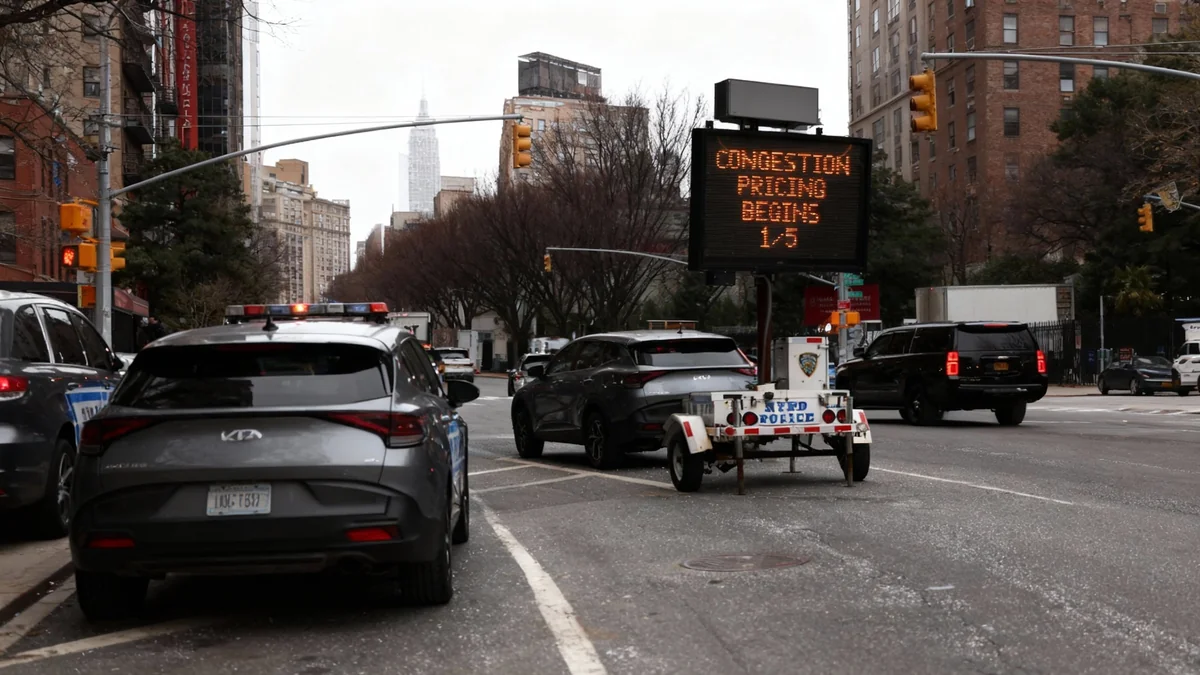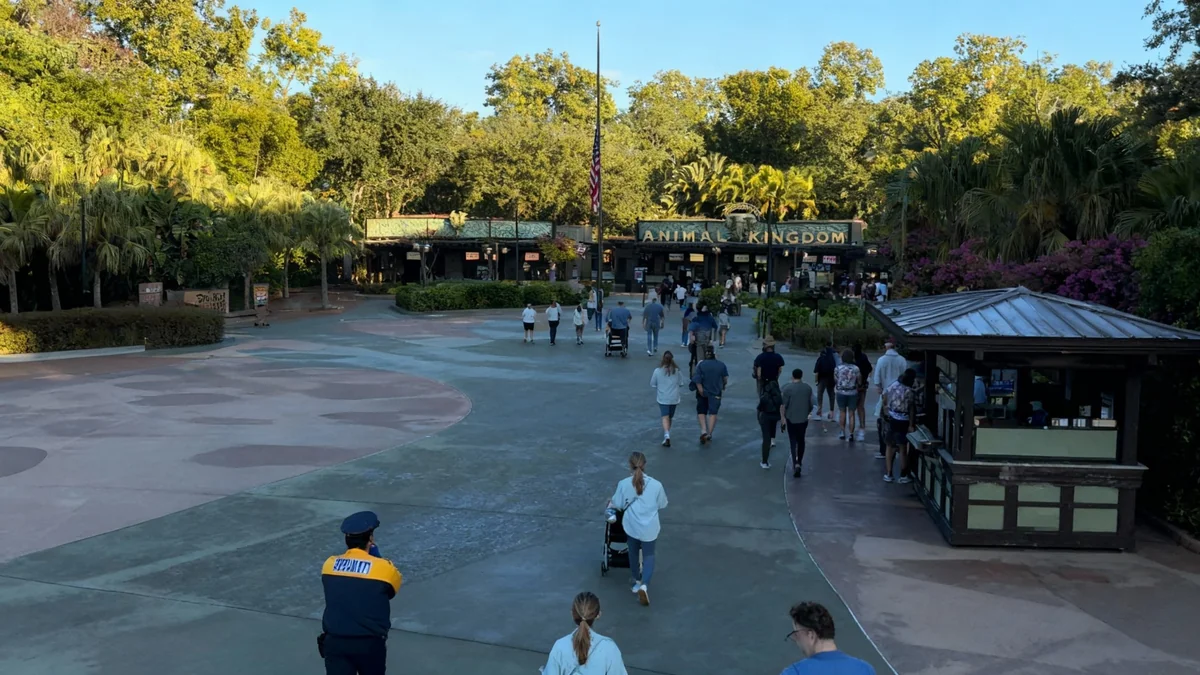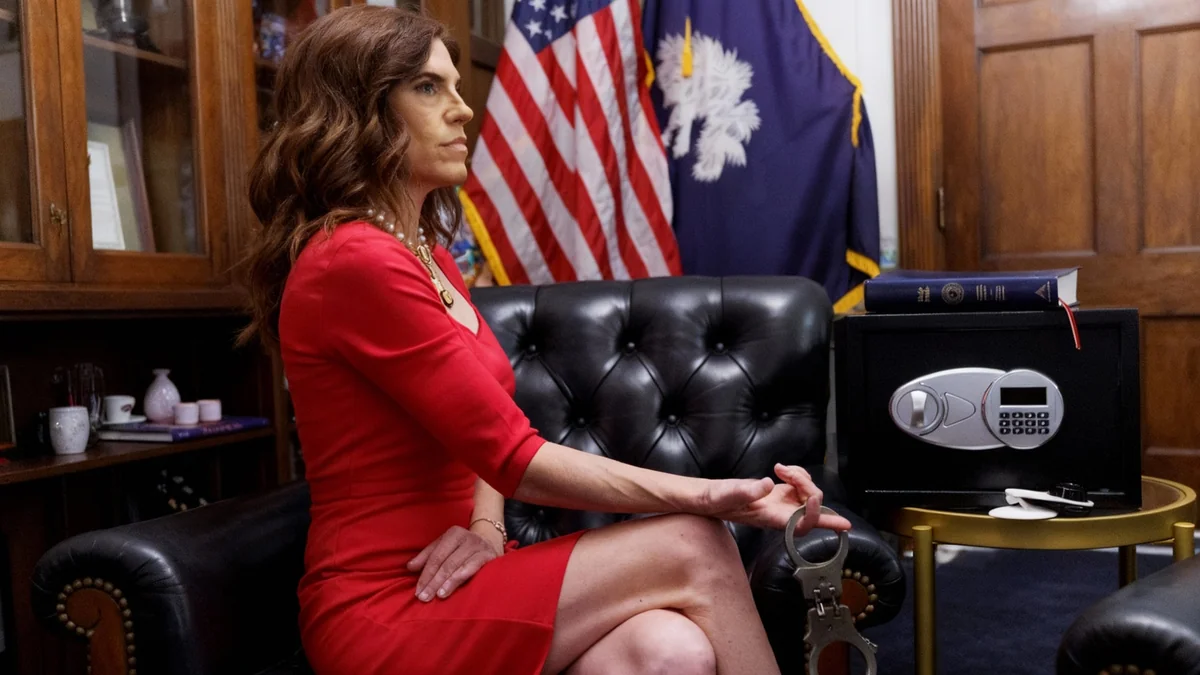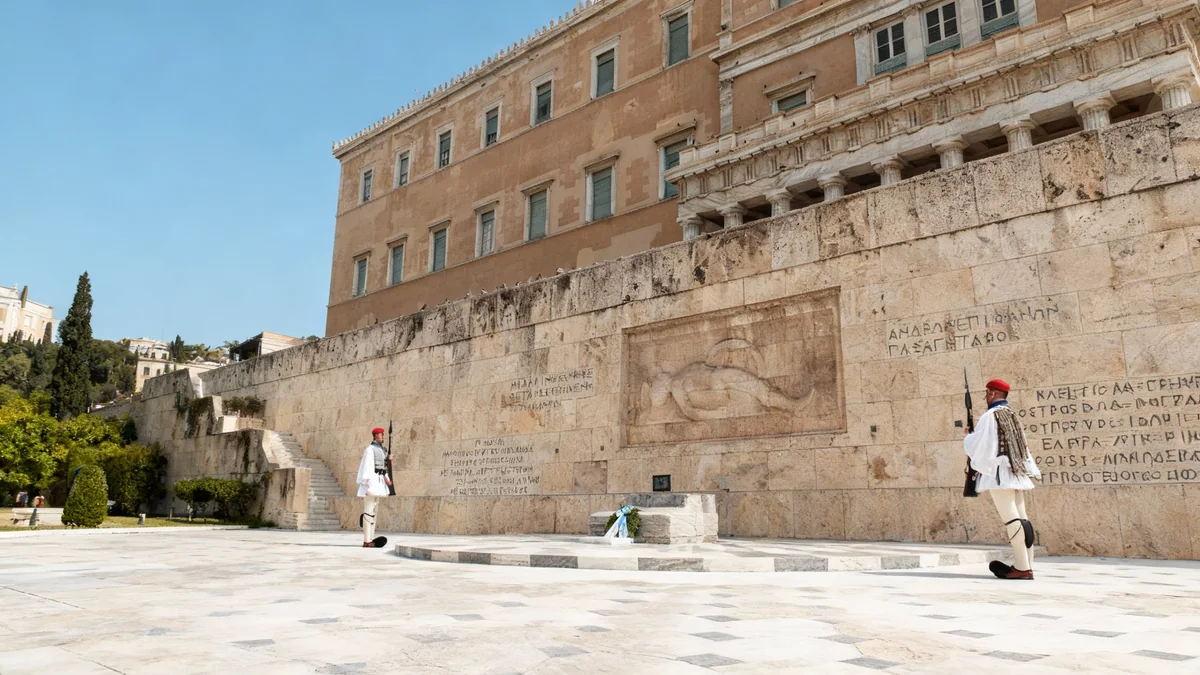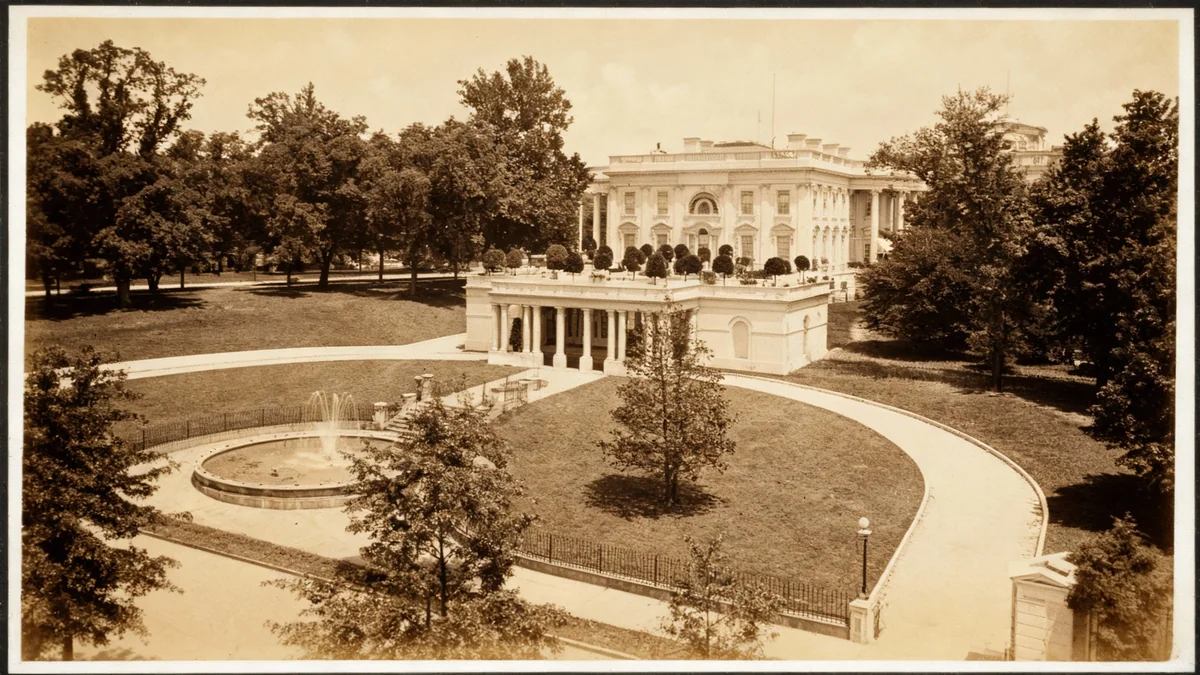The White House has renewed its effort to terminate New York City's vehicle congestion pricing program, a first-of-its-kind initiative in the United States. On Monday, President Donald Trump announced he would direct Transportation Secretary Sean Duffy to re-evaluate the policy, escalating a federal and state-level conflict over the future of urban transportation and funding.
The move comes more than five months after a federal judge temporarily blocked the administration's initial attempt to halt the program, which charges drivers to enter a designated zone in Manhattan. The renewed challenge sets the stage for another legal and political showdown over a program that has become a critical funding source for the city's public transit system.
Key Takeaways
- President Trump has directed the Transportation Department to reconsider terminating New York City's congestion pricing program.
- The program, which began in January, charges most vehicles $9 to enter Manhattan south of 60th Street during peak hours.
- A federal judge previously issued an injunction in May preventing the administration from stopping the program.
- Governor Kathy Hochul's office has vowed to fight any new attempt to end the fee, citing its success in reducing traffic and funding mass transit.
- The program is projected to generate $500 million this year, supporting $15 billion in financing for transit upgrades.
A Renewed Federal Offensive
President Trump voiced his opposition to the program on the social media platform Truth Social. He claimed the fee is deterring visitors and harming the city's economy.
"New York City is getting KILLED by her ridiculous CONGESTION PRICING, where people have to pay a fortune to come into Manhattan - So they just don't come!" the president stated. "The place is a ghost town."
This statement signals a formal directive to Transportation Secretary Sean Duffy to explore avenues for ending the program. The administration's previous attempt to intervene involved threatening to withhold federal funding and environmental approvals for key infrastructure projects in the state.
The timing of the announcement is notable, occurring just one day before New York City's mayoral election. The policy has been a topic of debate among local candidates and voters, and the federal intervention adds another layer of complexity to the issue.
New York's Staunch Defense
State officials in New York have responded forcefully to the renewed federal pressure. A spokesperson for Governor Kathy Hochul confirmed the state's commitment to the program and its readiness for another legal challenge.
"The Trump administration tried once before to kill congestion pricing and lost," the spokesperson said. "If they want to try again, we’ll see them in court. The cameras are staying on."
Governor Hochul has consistently argued that the program is achieving its dual goals: reducing paralyzing gridlock in Manhattan's central business district and creating a dedicated revenue stream for the Metropolitan Transportation Authority (MTA). According to her office, both tourism and business activity have seen an increase since the fee was implemented, contrary to the president's claims.
Background of the Legal Battle
The conflict first moved to the courts earlier this year. In April, Transportation Secretary Duffy informed Governor Hochul that his department could withhold project funding if the state did not abandon the congestion fee. In response, New York filed a lawsuit. In May, U.S. District Judge Lewis Liman granted a preliminary injunction, which temporarily stopped the Transportation Department from taking punitive action against the state. A final ruling on the merits of the case is anticipated from Judge Liman by the end of December.
The Financial Stakes for New York Transit
The congestion pricing program is more than just a traffic management tool; it is a cornerstone of the MTA's financial strategy. The funds generated are essential for modernizing the city's aging subway and bus systems.
- Peak Hour Fee: $9 for most passenger cars.
- Projected 2025 Revenue: $500 million.
- Total Financing Supported: $15 billion in debt for capital improvements.
These capital improvements include critical projects such as signal system upgrades, purchasing new subway cars and electric buses, and making stations more accessible. State officials argue that without this revenue, these necessary projects would be jeopardized, impacting millions of daily commuters.
Broader Infrastructure Tensions
The dispute over congestion pricing is part of a larger pattern of friction between the Trump administration and New York regarding infrastructure funding. The administration has also taken action on other major transit projects in the region.
Recently, the White House froze $18 billion in funding for several key projects. This includes the $17.2 billion Hudson River tunnel project, a critical passenger rail link between New Jersey and Manhattan used by Amtrak and commuter lines. President Trump has stated that this project has been "terminated," a claim that has become a significant issue in regional politics.
Furthermore, on February 19, the Transportation Department officially rescinded its federal approval for the congestion pricing program itself, a move that predated the subsequent legal challenges. These actions highlight a contentious relationship that directly impacts the future of transportation infrastructure for the entire New York metropolitan area.
The Future of Congestion Pricing
As the federal government prepares a new challenge, the future of America's first major congestion pricing plan remains uncertain. The program's supporters see it as a model for other dense American cities struggling with traffic and a need for transit investment.
Opponents, however, argue it places an unfair financial burden on commuters from outer boroughs and neighboring states who rely on cars to get to work. They contend it hurts small businesses and low-income drivers the most.
With a final court ruling expected in the coming weeks and the White House applying renewed pressure, the debate over who controls urban policy—and how to pay for public infrastructure—is set to intensify. The outcome will have significant consequences not only for New Yorkers but for cities across the country watching to see if this model can succeed.

